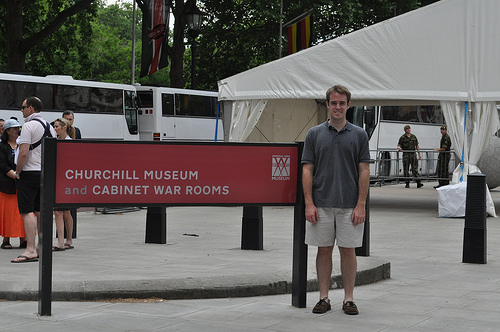The Churchill Museum and Cabinet War Rooms
Winston Spencer Churchill has perhaps one of the most recognisable faces and voices in British history. The Churchill museum was established in 1968 and since then it has been offering visitors the chance to learn about this iconic figure.

World Influence
The museum sponsors a regular international Churchill Conference with aims to use the experience and methods of Churchill and apply them to modern issues and problems the world over. The museum does not seek to sway the personal political opinions of its visitors, that is not what this centre is about. Instead the Churchill Centre is more about educating you about the man, his methods and his insight, and how his influence changed Britain for the better. You will be able to understand the man a little more by learning about the pressures he faced, the weight that his decisions carried and ultimately how the mantle he wore made him the man he became. The Churchill Centre has received praise and acclaim from figure heads the world over for the way it represents the man and his methods and motivations.
War Rooms
Beneath the busy streets of London are the Cabinet War Rooms. People in the city walk overhead, going about their business without any knowledge of what lies beneath the pavements they walk on. This subterranean network of rooms was a hive of activity during the Blitz, not only did they protect cabinet ministers and government officials, this is where all wartime operations were recorded, assessed and directed. Meetings were held here late into the night as the bombing continued overhead, in fact the network of tunnels became a second home to Churchill and many of his cabinet during those difficult war years.
Visiting the war rooms today allows you to step back in history and feel for yourself how it must have felt to be so deep below the surface with the bombs of the blitz exploding in the city overhead. The equipment in the rooms is still there for you to touch and interact with, allowing you to get a sense of how these rooms were operated and to imagine how they felt filled with people going about the business of war.
Map Room
As you enter the map room you will be entering a moment in time, almost like a freeze frame. Nothing has been changed in that room since its occupants left in 1945. All of the charts, maps and notebooks are just as they were left. This is the room that charted the advance of troops, paths of bombing flights and bases of operations on all of the fronts. Perhaps if you stand still enough and close your eyes you will still feel the buzz of activity that went on in here, or sense the urgency and the importance of the work that was done here and of course, the major world changing decisions that were made here. The War Rooms offer a unique experience to today’s visitors.

